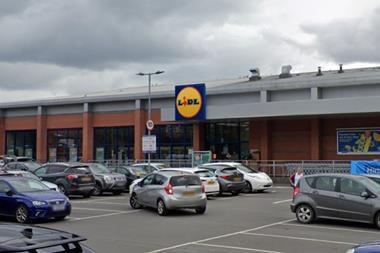Everyone (including me) keeps talking about long, dark tunnels, but I am starting to think we’re actually stuck in a very deep hole – one that it may prove impossible for some parts of the market to dig themselves out of.

News of potentially hundreds of distressed shopping centres coming to market and 15.4m sq ft of additional empty retail space being dumped on to our high streets thanks to the demise of Arcadia’s and Debenhams’ bricks ‘n’ mortar empires does not bode well for retail’s chances.
Inevitably, some experts are drawing parallels with the 2008 global financial crisis and warning that the current outlook is even worse for retail than it was back then, given that the sector (the bricks ‘n’ mortar bit, anyway) was already on the ropes before Covid delivered what for many high street stalwarts has been a killer blow.
It certainly isn’t better. Just look at the paltry prices some of these assets are selling for. If shopping centres are not yet in negative value territory, many are perilously close.
Coventry shopping centre West Orchards was sold at Allsop’s commercial auction last week for £4.85m, having been valued at £37m eight years ago, and Tristan Capital Partners is selling White River Place Shopping Centre in Cornwall via BidX1 with a guide price of £4.65m, having paid around £25m for it in 2012. Throw into the mix empty rates liabilities and virtually no income, and buyers could end up saddled with schemes that are net liabilities costing millions of pounds a year just to own.
The market has already got to the point where banks are being forced to take more control of assets because existing investors are not prepared to put up the additional dosh to cure a breach. Some will no doubt end up writing down huge sums of money, although they may be prepared to fund the recovery of assets where they think there is potential upside in years to come.
What could that upside be? Increasingly, there is talk of leisure taking the place of retail on many high streets and there are certainly plenty of interesting leisure operators seizing the opportunity to expand, but there is a world of difference between plugging a few gaps and plugging a gaping hole.
Leisure will not be the only answer in the dominant locations, which will become more mixed-use, believes Sovereign Centros boss Chris Geaves. “The bigger, really powerful shopping centres are going to get bigger and better,” he says. “They will become not just shopping centres but venues. The UK shopper wants to be entertained. The next tier down will survive because they’re big powerful city-centre schemes, and there will be a place for cathedral cities and university towns, but I fear for the much more local centres, or towns where there are two or more centres when there is really only room for one. These locations will become even more marginalised and less relevant from a shopping centre point of view. They’re not all going to survive.”
Not if they rely on leisure, anyway. These provincial and secondary centres are going to have to look to other uses, such as residential, offices and even self-storage. They are going to have to totally reinvent themselves, and local authorities are going to have to do their bit by putting their hands in their pockets to support them.
Get it wrong and the future will not just look worse for these centres than it did in 2008; there will be no future.





























No comments yet